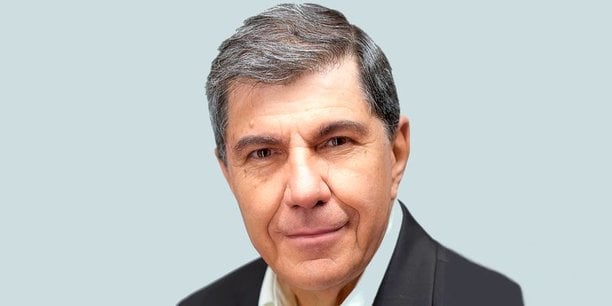La Tribune – The European Union (EU) proposed on Tuesday to introduce new sanctions against Russia, most notably an embargo on Russian coal imports – 4 billion exchanged per year, 45% of imports from Europe – , in response to the discovery of a mass grave in Boutcha. What does this economic sanction mean for Moscow?
Jacques Sapir- The coal measures will have a marginal impact on the Russian economy compared to the value of trade. However, this can cause problems for some mines. However, the extraction could certainly find new outlets, especially in China or India.
The EU also says it is considering ending purchases of Russian oil, while the United States and the United Kingdom have already imposed embargoes. India and China have even increased their supplies from Moscow in recent months. Is this situation sustainable for Russia?
Obviously yes. The way the West enforces sanctions on Russian oil is not working properly. India and China are taking over the exports. India has reached an agreement that matches its interests: today New Delhi pays between 75 and 80 dollars per Russian barrel – a reduction of about 20 dollars per barrel – while the price of crude oil from Saudi Arabia, the country to which India comes from traditionally delivers is around $100. Admittedly, Russia sells at a lower price, but maintains volumes. The International Energy Agency (IEA) estimated the fall in Russian exports after the sanctions at 30% in early March. In reality we will be more around 20% and maybe even less.
Are Indian or Chinese outlets for the sale of Russian oil – and possibly coal tomorrow – a matter of short-term importance – thanks to attractive prices – or are we witnessing a longer-term shift in the balances of globalization?
Each has its own strategic interests and further maintains its positions. For example, India wants to ensure control in the regional area of the Indian Ocean. It will thus develop privileged relations with the countries of the west coast of Africa and South Africa. But in doing this, India is cooperating with what China and Russia are doing. In addition to hydrocarbons, the Indian military industry increasingly relies on Russian contracts. It is developing a hypersonic missile based on certain technologies that Russia has given it. More broadly, a group of G20 countries has somehow decided to move forward together to defend their interests against Western countries. It should also be remembered that in 2019 India decided to move from observer status to full member in Shanghai Cooperation Organizationto which Russia and China adhere.
Is this Russian sweep to Asia only linked to the war in Ukraine?
No, this Russian view is not new. You already found this idea in the 2007 text delivered by Vladimir Putin at the Munich conference† Russia’s energy strategy for 2030, then 2040, was established in 2010. And each version insisted a little more on the turn to Asia, in order to reduce the dependence of Russian exports on Europe. Vladimir Putin has always had the idea to reduce his dependence on Western countries and the United States, but especially on European countries.
In this context, Russia’s 2014 annexation of Crimea and the first Western sanctions that followed materialized this shift. Contacts were quickly established with China, leading to Beijing partially financing the gas pipeline between the two countries. A new gas pipeline, 50% financed by China, will be commissioned in 2023. Talks are also underway for a gas pipeline project that would traverse Afghanistan to supply India. The 2014 conflict also made Russian elites aware of the first Western sanctions.
It is clear that Vladimir Putin saw in this political-strategic shift an element of national independence and sovereignty from Russia. Focusing on Asia has become essential from the point of view of freedom of action, freedom of maneuver for Moscow.
As such, Europeans seem resistant to the idea of imposing an embargo on Russian gas, on which Europe depended 65% before the war and in particular because of Germany importing 40% of its needs through Moscow. A windfall with which he can finance his war in Ukraine. Could Putin consider that Berlin’s energy dependency was an Achilles’ heel for Europe?
It is obvious. We cannot replace LNG with Russian gas because we do not have the resources to convert it into gas. There are currently 20 processing plants across the European Union. If you add the English factories, that’s 22. However, these factories are running at nearly 100% capacity. Without Russian gas, four times more processing capacity would be needed. You also have to think about transport: 90% of the construction of LNG tankers is carried out by Chinese and Korean shipyards. In between the construction of factories and ships, it is clear that we do not have the replacement capacities in the short and even medium term. The risk of Russian gas being cut off is not only related to heating in European homes, but above all to our needs to run our industries.
How do you explain that Germany has placed itself in such energy dependence on Russia?
The German economic and political elites do not think long-term at all. Steeped in neoliberalism, they make short-term calculations. We should also emphasize the role of Chancellor Merkel’s political arbitration – or rather expediency – of Chancellor Merkel. Closing nuclear power plants was madness after Fukushima. The Germans have been unable to plan at least certain sectors of their economy. A change in a country’s energy mix can take ten or fifteen years!
In response to Western sanctions, Russia wants to impose payment in rubles for gas contracts for European supplies. What is the Kremlin aiming for with this measure?
First of all, it should be remembered that since the beginning of the war, Russian exporters have had to sell 80% of their foreign exchange earnings to the Russian Central Bank. This measure is reminiscent of that of Evgeny Primakov, then Prime Minister (from September 1998 to May 1999, Ed), which was later suppressed by his successors. His return is a victory for the “hawks” of the Kremlin.
For example, today Western companies can continue to pay with the currency they have used until now, but on the condition that they deposit these amounts to a Russian bank, in a so-called “K account”. This will make the conversion into rubles at Moscow rate terms. So, 80% of the amount will be changed to rubles, 20% can remain in the currency chosen by the buyer. The purpose of this maneuver is twofold for the Kremlin. On the one hand, and that is the main goal, it is a matter of making sure that these funds, by having them housed in Russian institutions, are not blocked by Westerners. It is then a matter of supporting the ruble, but this goal is secondary. In this regard, it should be remembered that the exchange rate against the dollar recovered before the announcement of this measure.
By controlling this financing circuit and imposing a payment of 80% in rubles, isn’t this measure also intended to tighten the Kremlin’s grip on the oligarchs?
This is another reason for this measure. It is intended to limit the oligarchs’ room for maneuver. But it is not necessarily aimed at the bosses of Russian oil companies, who are very close to the Kremlin, such as Igor Setchin, the boss of Rosneft. It seems unlikely to me that he will turn his back on Putin, even if he likes to show his power.
Rather, it is a matter of targeting “fluctuating” Russian bosses, who are active in industries such as aluminum, for example. It is a measure of anticipation. Oleg Deripaska, the boss of the world’s second largest aluminum group, is no longer on trial in the Kremlin. If Russia decides to expand the payment of contracts in rubles to these industries – which is not the case today, but it should not be ruled out – this profile of oligarchs will be hampered by payment in rubles and their diminished powers.
These sanctions will also hit Russian households hard. Inflation reached 9.2% in one year in February. Will the Russians at some point probably not find the cost of war too high?
This is a problem of concern to the Russian government. In my view, this inflation will be at least 12% to 15% by the end of the year. But this is not specific to Russia, it follows global inflation that started to accelerate from the late spring and summer of 2021. To protect against this, the government is preparing a series of measures: an increase in pensions, civil servants’ salaries, probably the introduction of a minimum wage… To finance these measures, its financial scope will not be affected by the sanctions, because this is essentially internal operations. be from Russia.
Nevertheless, he It is interesting to look at the distributive effects of this phenomenon. Inflation on manufactured goods, especially those bought by wealthier upper middle classes will rise significantly. However, the aid currently being discussed in the State Duma, the Russian parliament, is aimed more at the working class. This should narrow the purchasing power gap between the two classes. If we exclude the 1/1000 of the richest, in other words the oligarchs, it is quite possible that the share of the population’s income that is below the median increases in GDP.
†
Last published book:
07 Apr 2022, 06:38




